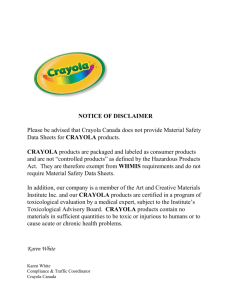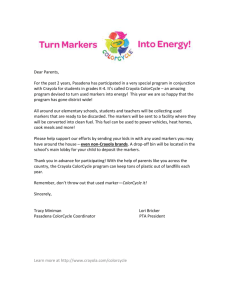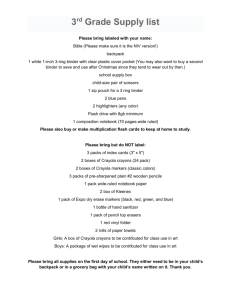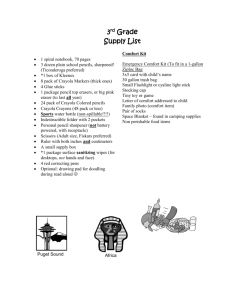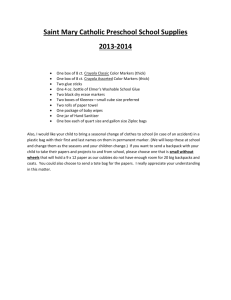File - Business Academy
advertisement
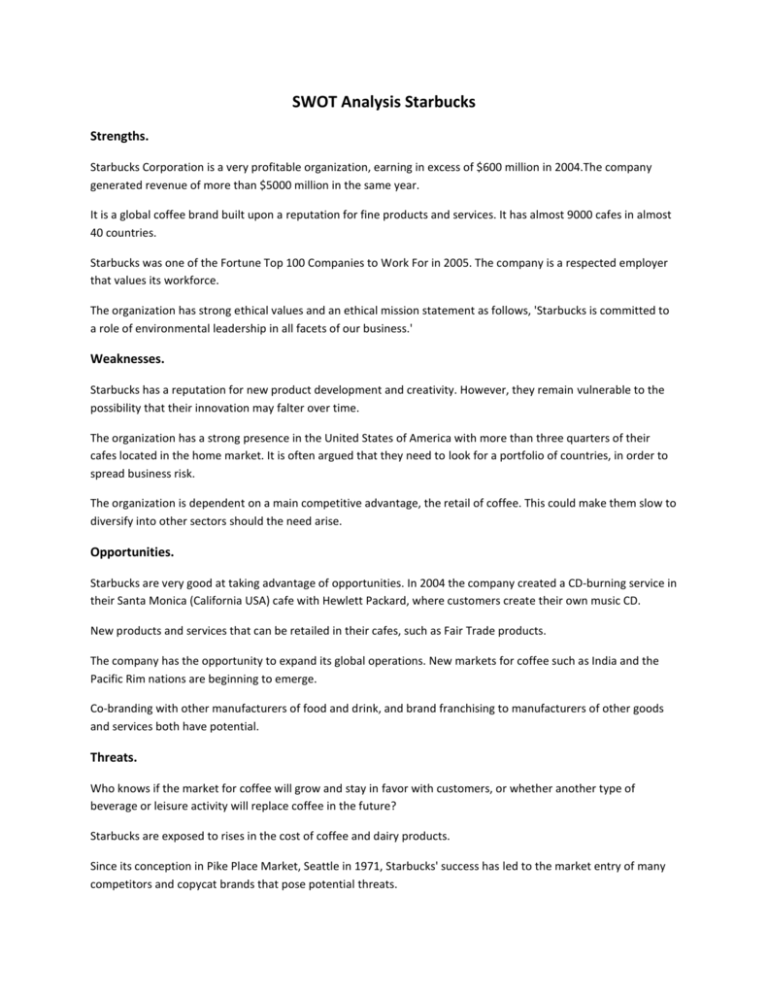
SWOT Analysis Starbucks Strengths. Starbucks Corporation is a very profitable organization, earning in excess of $600 million in 2004.The company generated revenue of more than $5000 million in the same year. It is a global coffee brand built upon a reputation for fine products and services. It has almost 9000 cafes in almost 40 countries. Starbucks was one of the Fortune Top 100 Companies to Work For in 2005. The company is a respected employer that values its workforce. The organization has strong ethical values and an ethical mission statement as follows, 'Starbucks is committed to a role of environmental leadership in all facets of our business.' Weaknesses. Starbucks has a reputation for new product development and creativity. However, they remain vulnerable to the possibility that their innovation may falter over time. The organization has a strong presence in the United States of America with more than three quarters of their cafes located in the home market. It is often argued that they need to look for a portfolio of countries, in order to spread business risk. The organization is dependent on a main competitive advantage, the retail of coffee. This could make them slow to diversify into other sectors should the need arise. Opportunities. Starbucks are very good at taking advantage of opportunities. In 2004 the company created a CD-burning service in their Santa Monica (California USA) cafe with Hewlett Packard, where customers create their own music CD. New products and services that can be retailed in their cafes, such as Fair Trade products. The company has the opportunity to expand its global operations. New markets for coffee such as India and the Pacific Rim nations are beginning to emerge. Co-branding with other manufacturers of food and drink, and brand franchising to manufacturers of other goods and services both have potential. Threats. Who knows if the market for coffee will grow and stay in favor with customers, or whether another type of beverage or leisure activity will replace coffee in the future? Starbucks are exposed to rises in the cost of coffee and dairy products. Since its conception in Pike Place Market, Seattle in 1971, Starbucks' success has led to the market entry of many competitors and copycat brands that pose potential threats. SWOT Analysis Nike, Inc. Strengths. Nike is a very competitive organization. Phil Knight (Founder and CEO) is often quoted as saying that “Business is war without bullets.” Nike has a healthy dislike of its competitors. At the Atlanta Olympics, Reebok went to the expense of sponsoring the games. Nike did not. However Nike sponsored the top athletes and gained valuable coverage. Nike has no factories. It does not tie up cash in buildings and manufacturing workers. This makes a very lean organization. Nike is strong at research and development, as is evidenced by its evolving and innovative product range. They then manufacture wherever they can produce high quality product at the lowest possible price. If prices rise, and products can be made more cheaply elsewhere (to the same or better specification), Nike will move production. Nike is a global brand. It is the number one sports brand in the world. Its famous 'Swoosh' is instantly recognizable, and Phil Knight even has it tattooed on his ankle. Weaknesses. The organization does have a diversified range of sports products. However, the income of the business is still heavily dependent upon its share of the footwear market. This may leave it vulnerable if for any reason its market share erodes. The retail sector is very price sensitive. Nike does have its own retailer in Nike Town. However, most of its income is derived from selling into retailers. Retailers tend to offer a very similar experience to the consumer. Can you tell one sports retailer from another? So margins tend to get squeezed as retailers try to pass some of the low price competition pressure onto Nike. Opportunities. Product development offers Nike many opportunities. The brand is fiercely defended by its owners whom truly believe that Nike is not a fashion brand. However, like it or not, consumers that wear Nike product do not always buy it to participate in sports. Some would argue that in youth culture especially, Nike is a fashion brand. This creates its own opportunities, since product could become unfashionable before it wears out i.e. consumers need to replace shoes. There is also the opportunity to develop products such as sport wear, sunglasses and jewelry. Such high value items do tend to have associated with them, high profits. The business could also be developed internationally, building upon its strong global brand recognition. There are many markets that have the disposable income to spend on high value sports goods. For example, emerging markets such as China and India have a new richer generation of consumers. There are also global marketing events that can be utilized to support the brand such as the World Cup (soccer) and The Olympics. Threats. Nike is exposed to the international nature of trade. It buys and sells in different currencies and so costs and margins are not stable over long periods of time. Such an exposure could mean that Nike may be manufacturing and/or selling at a loss. This is an issue that faces all global brands. The market for sports shoes and garments is very competitive. The model developed by Phil Knight in his Stanford Business School days (high value branded product manufactured at a low cost) is now commonly used and to an extent is no longer a basis for sustainable competitive advantage. Competitors are developing alternative brands to take away Nike's market share. As discussed above in weaknesses, the retail sector is becoming price competitive. This ultimately means that consumers are shopping around for a better deal. So if one store charges a price for a pair of sports shoes, the consumer could go to the store along the street to compare prices for the exactly the same item, and buy the cheaper of the two. Such consumer price sensitivity is a potential external threat to Nike. SWOT Analysis Apple Strengths. •Product development. Apple doesn't invent the market, but its products set high standards for the market. •Design and utility. Sleek, not clunky. For instance, the desktop computer is part of the screen, not a separate box with wires; the iPhone has very few buttons and feels nice in the hand. Products are easy to use, almost intuitive. •Marketing. Clever and takes advantages of people's frustrations with other hardware. •Brand name. Weaknesses. •Very proprietary and controlling. Won't open the operating system to outsiders to develop hardware to work with the products, keeping hardware sales to itself. While this keeps design control inside and up to standards, it has hurt wide adaptation of its hardware, especially computers, where it has a relatively small market share. Apple has veto power over Apps sold. •CEO Steve Jobs although passing away in 2011 was described as a control freak and very demanding. When he died, the company is projected to take a severe blow. When his health was in the news, his secretiveness damaged the company's reputation. •Not shareholder-friendly. Has abused option granting in the past and refuses to pay a dividend despite a huge (and growing) cash level, no debt, and gobs of free cash flow. Opportunities. •Very loyal customer base which has expanded beyond the Mac-heads of the 1990s with the iPod and the iPhone. The iPad has had a very successful launch. This seems to be leading to more sales of computers. •Has a well-deserved reputation for high-quality products that work smoothly. New products are generally wellreceived and have a built-in purchasing base. •Move into other computer or media product spaces that are not served well. Can continue to design the standard-setter for those spaces? •A new version of Apple TV could take advantage of today's more highly developed Web Threats. •Big ideas are easy to copy. Microsoft (Nasdaq: MSFT ) copied the graphical user interface, and even Linux has a version. The touchscreen interface is being used in other phones (e.g. Android). Apps are being developed for other smart phones and devices. •High-priced products. Apple priced itself out of the personal computer market, and that remains a problem. Other smartphones that look and behave similarly to the iPhone are less expensive. •Google (Nasdaq: GOOG ) is moving into Apple's smartphone space by giving away the operating system, and it has announced that it will also be moving into the TV space. Both companies are well-funded, so any battle between the two could be long and ugly. Ben and Jerry's SWOT Strengths Prestigious, established, successful, global operation, with sales in USA, Europe and Asia, which is synonymous with social responsibility and environmentalism. For example, its products are packed in unbleached cardboard containers. Ben & Jerry's also donates a minimum of $1.1 million of pretax profits to philanthropic causes yearly. The company sponsors PartnerShops, which are Ben & Jerry outlets independently owned and operated by nonprofit organizations such as Goodwill Industries. The company is also involved in other good causes, including global warming, gun control and saving family farms. The company sells its colorfully named ice cream, ice-cream novelties, and frozen yogurt under brand names such as Chunky Monkey, Phish Food, and Cherry Garcia. It also franchises some 750 Ben & Jerry's Scoop Shops worldwide. Ben and Jerry's were bought by consumer products manufacturer Unilever in 2000, but were still able to retain their social responsibility platform and kept both co-founders closely involved with product development. Their brands complement Unilever's existing ice cream brands. In 2009 Ben and Jerry's Chunky Monkey ice cream flavor was named in a top ten list of the best ice cream in London. In 2007 Ben and Jerry's co-founders, Ben Cohen and Jerry Greenfield were asked to join Lance Armstrong in speaking about clean technology and alternative energy at the Ernst and Young national entrepreneur of the year awards. In 2008, their market share was second only Haagen-Dazs who had a 44% market share while Ben and Jerry's had 36%. This was achieved in spite of a premium price point. The premium price of the product was supported by a high quality image, and high quality products. Weaknesses In 2006, former CFO Stuart Wiles was convicted of embezzling some $300,000 from the company during his tenure at Ben & Jerry's, which ran from 2000 to 2004. In 2006 they had to stop using Michael Foods as their egg supplier, due to bad PR from the Humane Society, which alleged that Michel Foods treated chickens inhumanely. They achieved success despite several corporate weaknesses. The most obvious was a lack of professionalism in its management, and no clear mission statement (which they have amended). They reinvested huge amounts of property and equipment in 1994 increasing their long-term debts by almost 45% in 1993. They increased marketing and selling expenses and administrative infrastructure, which increased 28% to $36.3 million in 1994 from $28.3 million in 1993 and increased as a percentage of net sales to 24.4% in 1994 from 20.2% in 1993. They took out a vast amount of capital lease in their aim to automate their production to keep up with the intense competition. Their clear focus on multiple social responsibility issues could hurt the company by shifting the focus away from important business matters, and also add unnecessary costs. They need more experienced management to fuel aggressive growth in a downturned economy and change flat sales in their premium product lines. Opportunities In today's health conscious societies the introduction of more fat-free and healthy alternative ice cream and frozen yogurt products. Provide allergen free food items, such as gluten free and peanut free. In 2009 Ben & Jerry's announced plans to roll out the country's first HFC-free freezers; freezers that would be sold to grocery stores and would not emit harmful chemicals into the atmosphere. In 2008 they acquired Best foods and Slim-fast which will allow them to enter a new industry of weight loss products. In turn they can now expand into new geographic markets-more countries, like Europe, where the weight loss/management trend is taking hold. They could expand their existing product lines to compete with the 'private-in house brands' offered by supermarkets, and in developing countries. Selling Ben and Jerry's premium ice cream in South America (which is an emerging market that has yet to be capitalized upon). There is a growing demand for premium ice cream in new markets like Asia. Threats Much of their target market is constantly changing its product preferences (desiring to prevent diabetes, obesity etc.). That, coupled with a decrease in household sizes and discretionary income, has left sales flat in recent years. Consumers are concerned about fattening dessert products. Especially Ben and Jerry's target market, which are accustomed to reading nutrition labels. Any contamination of the food supply, especially e-coli. Major competitors, like Nestle (Pillsbury), Kraft Foods, Dunkin Donuts, and Dean Foods. They also have competition from global food companies with similar products and any grocery store label products. Much of their competition seems to be merging together, in order to remain marketable in this tough economy. Experts say that animal feed prices are rising, partly because biofuel crops are replacing cow fodder. In turn, the high priced animal feed pushes up the cost of milk. Prices of all milk products are rising worldwide, due to what some call a "perfect storm" of low supply and high demand. There is a distinct possibility that there may not be enough milk to meet demand, and that there could be a global milk shortage. Agricultural economists say today's milk shortage is basically a case of low supply and high demand worldwide. Supply is down for many reasons. A bad drought in Australia dried up the grass that the country's cows eat. New export taxes were added on Argentina's milk in an attempt to keep the country's food prices under control. Also, European farmers can't significantly increase production until a quota system is phased out eight years from now. The U.S. and Europe always used to have spare dairy products to sell cheaply around the globe, but that's no longer the case, says market expert Erhard Richarts. Skim Milk powder (which is easier to transport than fresh milk) is used in a wide range of foodstuffs, and in 2007 its price shot up to record levels worldwide - almost twice as high as the year before. Then retail prices went up, a butter shortage, cheese prices went up, and then wholesale prices went up, and there doesn't seem to be an end to it. Back in '66, in a school gym class, Ben Cohen and Jerry Greenfield found they hated running but loved food. Years later in '78, Ben had been fired from a series of jobs while Jerry had failed for the second time to get into medical school. Crayola SWOT - Crayola (Binney & Smith), a subsidiary of Hallmark, Inc. Corporate History Crayola Manufacturing is a 120 year old company that makes safe, dependable art supplies for children. Because most consumers have never heard of Binney & Smith, the Crayola maker changed its name in 2007 to reflect its brand name. Crayola has many different lines of products; as well as services, which vary from just crayons and markers. They produce 3 billion crayons a year, plus craft and character licensed activities. This SWOT analysis is about Crayola. Crayola began as Binney & Smith back in 1885 when Joseph Binney partnered with his son and nephew. Binney and Smith sold their first Crayola crayons in 1903, when a box of eight cost only a nickel. The small business began in New York and moved to Easton, Pennsylvania (where they remain today), producing the dustless chalk. In 1958 the Crayola 64-crayon box, which included 16 new colors and a built-in sharpener, made its debut on the "Captain Kangaroo Show." This Crayola box "became part of the collective history and experiences of generations of Americans, and a symbol of the color and fun of childhood." Crayola estimates that the average U.S. child wears down 730 crayons by age ten. And, in the same spirit, the Smithsonian Institution's National Museum of American History placed an actual 1958 Crayola 64-crayon box and an assortment of 20th century Crayola advertising in the permanent collection of the Division of Cultural History. The company's products are packaged in many languages and are sold worldwide. Safety in art materials was the main focus for Crayola resulting in non-toxic colors. Crayola also has a creative factory and offers services for creative minds to run free and party space availability with all of their branded products. In 1984 Hallmark purchased Crayola and has kept the company on top of their industry with products ranging on a wide scale from markers, pencils, chalk, watercolors to silly putty and even ornaments and die cast collectables. Strengths Crayola is a recognized and highly trusted brand name and logo. In fact, 98 out of every 100 Americans recognize it. Children age 2-10, their target market, love Crayola products and have selective demand for it. Children demand the products and then influence their parents to purchase them. The Crayola brand name is synonymous with high quality and high brand loyalty. They are a global company, with a wide spectrum of individuals who use Crayola products all over the world. Crayola has built up a highly successful distribution system. Their products are available everywhere, including grocery stores, drug stores, Internet sales, hospitals, doctor's offices, schools, gas stations, airports, theme parks, hotels and restaurants. They sell retail and also in bulk to organizational buyers at a lower cost. Schools all over the US and in other countries like The UK, Canada, Australia, and Mexico all utilize Crayola art materials. Crayola's website is geared for children, parents, and educators. They provide free ideas for crafts and printable coloring pages. The website is used for booking, ordering, promotional information, marketing, and more. Crayola even provides advice on how to remove stains on their official website. Crayola is well-established due to their innovation (keeping the company out of saturation and decline). Crayola has been in service for many years and knows how to cater to the needs of the consumer. Crayola is constantly building new products and the growth targets many individual needs. Crayola also developed art products that emphasized international diversity by launching Crayola My World multicultural crayons. The company hoped that by using crayons, markers, paints, and modeling compounds that reflected the variety of skin tones, children would build a positive sense of self as well as respect for cultural diversity. Crayola's price range is reflective of their core target market, middle and lower upper class Americans; and their products are priced competitively with their major competitor, Rose Art. The consumer feels that the price reflects the quality. Crayola uses all non-toxic, child-safe materials that are cost effective and efficient. They use a variety of colors with fun memorable names, which appeal to children and adults. Crayola is environmentally friendly as well. They have scented products for sensory skills. They have easy grip products for motor skills. They have licensing deals with major children's characters, including all Disney characters, and Nickelodeon characters, which increase their appeal to children. The majority of their retail promotion consists of television commercials, magazine ads, and point of purchase displays. Their promotion impacts and targets children primarily and foremost, however, it is a pull strategy to create an influence purchase by the parents. In most large retail stores, Crayola has their own aisle! Weaknesses In addition to its inkTank line, Crayola serves the professional market with its Portfolio Series collection of color pencils, oil pastels, and acrylic paints. Because they are most well-known for children's art products, they have yet to achieve high market share in this division, and most art professionals do not use Crayola products. Crayola launched an unsuccessful line of children's' clothing in the 1980's, and it was scaled back to include only newborn layette sets. In 2007 they launched a test market campaign for Crayola branded bottled water, which was also unsuccessful, as consumers were hesitant to buy it because they anticipated that the water would actually taste like crayons (which it didn't). Also in the late 1980's sales began to decline due to increased competition and the company began to slip into saturation, they began a campaign to increase demand by urging parents to purchase a "fresh box." Crayola's attempt to build a solar power plant was sidelined in 2008. They intended the power plant be used to help run their manufacturing facility in Pennsylvania, however, they have run into problems finding partners to make it a reality. Crayola still ranks behind in sales and market share in their marker product line. In 2007, Sanford Sharpie had a 31% market share, with sales (at Wal-Mart) of $56 million, while Crayola had a 22% market share, with sales of $37 million (at Wal-Mart). Opportunities In 2009 they introduced two innovative lines of products for babies and toddlers; including products that allow babies to explore colors even before they can use a crayon. The products for toddlers are large enough so that they can grasp them, and even color in the bathtub, which allows for easy clean up, therefore appealing to the primary purchaser, parents. In July 2009 Crayola launched a school social media campaign on Twitter and Facebook. It is geared towards moms (their core purchaser) and features innovative ways to be creative and save money during back to school shopping. In the spring of 2009 they created a summer wellness campaign to encourage children to play outside more. Threats With the advent of computers and web based learning, sales of crayons are projected to decrease as children leave behind hand held art supplies at a younger and younger age. It's called KGOY-kids growing older younger, and many companies have suffered because of it, most recognizable is Mattel, the maker of Barbie dolls. In the 1990's the average age of a child in their target market was 10 years old, and in 2000 it dropped to 3 years old. As children reach the age of four and five, old enough to play on the computer, they become less interested in toys and crayons and begin to desire electronics such as cell phones and video games. Crayola is slowly falling victim to the same phenomena, how will they innovate to overcome this? In the downturned economy, parents and schools are spending less on school supplies. A survey from Deloitte found that 64% of consumers said they would spend less on school purchases. Nationwide, parents plan to spend an average of $548 to send their children back to school; and estimates range from a decline of 7.7%, forecast by the National Retail Federation, to as much as 12% in 2009, according to America's Research Group. SWOT Analysis McDonald's Strengths McDonald's has been a thriving business since 1955 and 20 of the top 50 corporate staff employees started as a restaurant level employee. In addition, 67,000 McDonald’s restaurant managers and assistant managers were promoted from restaurant staff. Fortune Magazine 2005 listed McDonald's as the "Best Place to Work for Minorities." McDonalds invests more than $1 billion annually in training its staff, and every year more than 250,000 employees’ graduate from McDonald's training facility, Hamburger University. The business is ranked number one in Fortune Magazine's 2008 list of most admired food service companies. One of the world's most recognizable logos (the Golden Arches) and spokes character (Ronald McDonald the clown). According to the Packard Children's Hospital's Center for Healthy Weight children age 3 to 5 were given food in the McDonalds packaging and then given the same food without the packaging, and they preferred the food in the McDonald's packaging every single time. McDonalds is a community oriented, socially responsible company. They run Ronald McDonald House facilities, which provide room and board, food and sibling support at a cost of only $10 a day for families with children needing extensive hospital care. Ronald McDonald Houses are located in more than 259 local communities worldwide, and Ronald McDonald Care Mobile programs offers cost effective medical, dental and education services to children. They also sponsor Olympic athletes. They are a global company operating more than 23,500 restaurants in 109 countries. By being spread out in different regions, this gives them the ability to weather economic fluctuations which are localized by country. They can also operate effectively in an economic downturn due to the social need to seek out comfort foods. They successfully and easily adapt their global restaurants to appeal to the cultural differences. For example, they serve lamb burgers in India and in the Middle East; they provide separate entrances for families and single women. Approximately 85% of McDonald's restaurant businesses world-wide are owned and operated by franchisees. All franchisees are independent, full-time operators and McDonald's was named Entrepreneur's number-one franchise in 1997. They have global locations in all major airports, and cities, along the highways, tourist locations, theme parks and inside Wal-Mart. They have an efficient, assembly line style of food preparation. In addition they have a systemization and duplication of all their food prep processes in every restaurant. McDonald's uses only 100% pure USDA inspected beef, no fillers or additives. Additionally the produce is farm fresh. McDonald's serves 100% farm raised chicken no fillers or additives and only grade-A eggs. McDonald's foods are purchased from only certified and inspected suppliers. McDonalds works closely with ranchers, growers and suppliers to ensure food quality and freshness. McDonalds only serves name brand processed items such as Dannon Yogurt, Kraft Cheese, Nestle Chocolate, Dasani Water, Newman's Own Salad Dressings, Heinz Ketchup, Minute Maid Juice. McDonald's takes food safety very seriously. More than 2000 inspections checks are performed at every stage of the food process. McDonalds are required to run through 72 safety protocols every day to ensure the food is maintained in a clean contaminate free environment. McDonald's was the first restaurant of its type to provide consumers with nutrition information. Nutrition information is printed on all packaging and more recently added to the McDonald's Internet site. McDonalds offers salads, fruit, roasted chicken, bottled water and other low fat and calorie conscious alternatives. Weaknesses Their test marketing for pizza failed to yield a substantial product leaving them much less able to compete with fast food pizza chains. High employee turnover in their restaurants leads to more money being spent on training. They have yet to capitalize on the trend towards organic foods. McDonald's have problems with fluctuations in operating and net profits which ultimately impact investor relations. Operating profit was $3,984 million (2005) $4,433 million (2006) and $3,879 million (2007). Net profits were $2,602 million (2005), $3,544 million (2006) and $2,395 million (2007). Opportunities In today's health conscious societies the introduction of a healthy hamburger is a great opportunity. They would be the first QSR (Quick Service Restaurant) to have FDA approval on marketing a low fat low calorie hamburger with low calorie combo alternatives. Currently McDonald's and its competition health choice items do not include hamburgers. They have industrial, Formica restaurant settings; they could provide more upscale restaurant settings, like the one they have in New York City on Broadway, to appeal to a more upscale target market. Provide optional allergen free food items, such as gluten free and peanut free. In 2008 the business directed efforts at the breakfast, chicken, beverage and convenience categories. For example, hot specialist coffees not only secure sales, but also mean that restaurants get increasing numbers of customer visits. In 2009 McDonald's saw the full benefits of a venture into beverages. Threats They are a benchmark for creating "cradle to grave" marketing. They entice children as young as one year old into their restaurants with special meals, toys, playgrounds and popular movie character tie-ins. Children grow up eating and enjoying McDonalds and then continue into adulthood. They have been criticized by many parent advocate groups for their marketing practices towards children which are seen as marginally ethical. They have been sued multiple times for having "unhealthy" food, allegedly with addictive additives, contributing to the obesity epidemic in America. In 2004, Michael Spulock filmed the documentary Super Size Me, where he went on an all McDonalds diet for 30 days and wound up getting cirrhosis of the liver. This documentary was a direct attack on the QSR industry as a whole and blamed them for America's obesity epidemic. Due in part to the documentary, McDonalds no longer pushes the super size option at the dive thru window. Any contamination of the food supply, especially e-coli. Major competitors, like Burger King, Starbucks, Taco Bell, Wendy's, KFC and any mid-range sit-down restaurants. McDonald's is the leading global foodservice retailer with more than 31,000 local restaurants serving more than 58 million people in 118 countries each day. More than 75% of McDonald's restaurants worldwide are owned and operated by independent local men and women.
